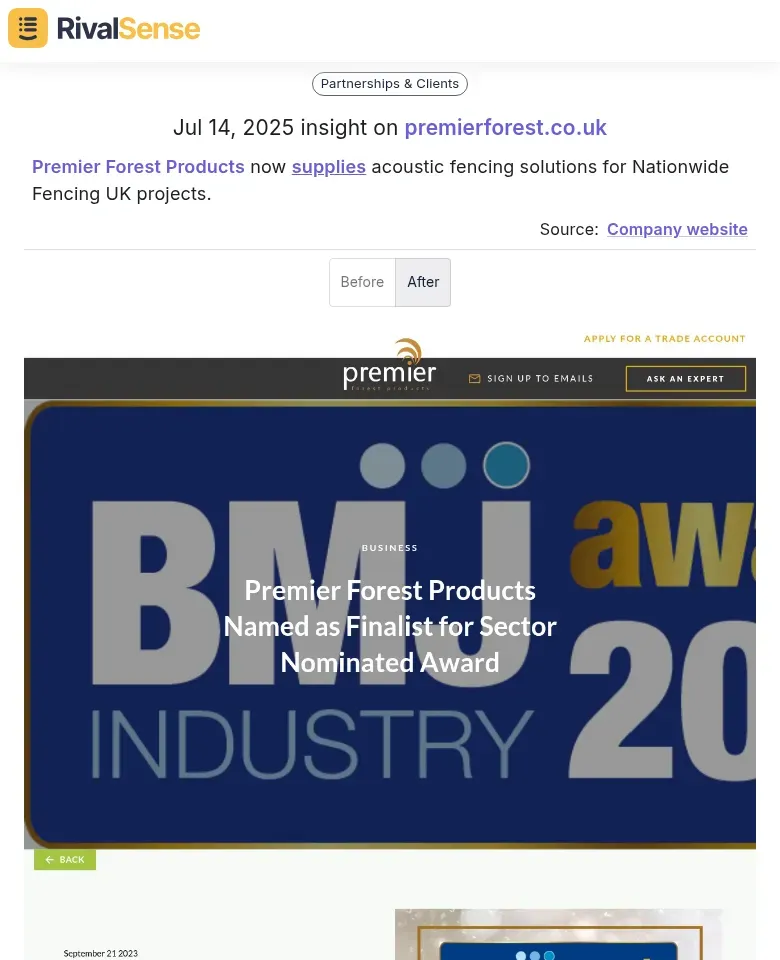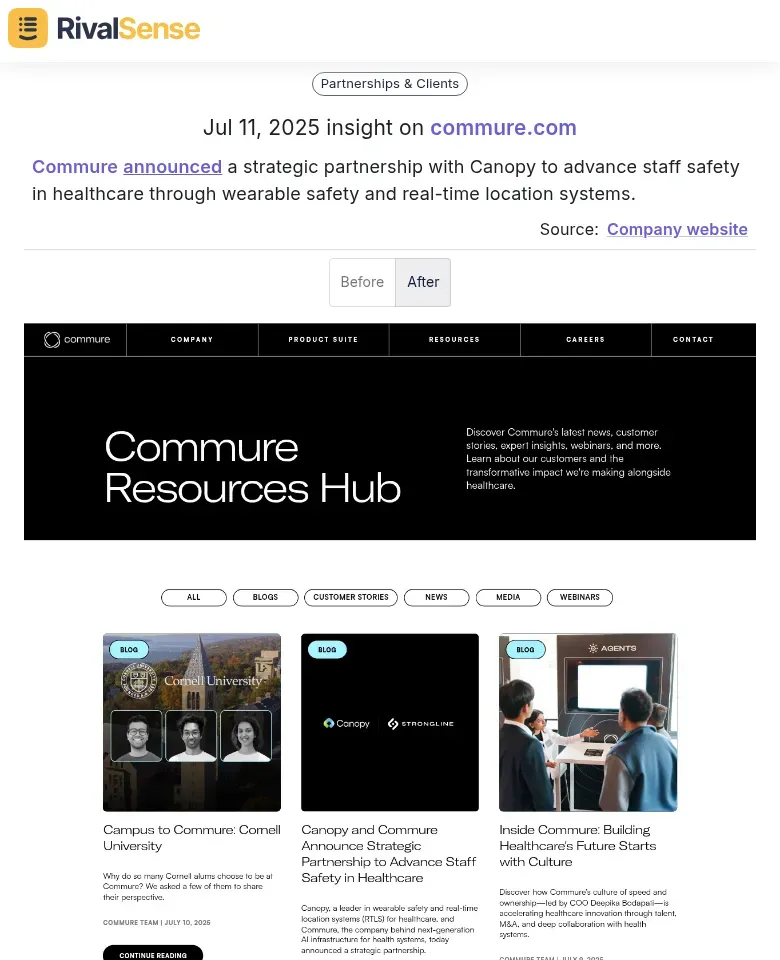Competitor Partnerships & Clients Cheat Sheet: Essential Insights
In the fiercely competitive B2B landscape, understanding your competitors' partnerships and client relationships is not just about keeping tabs—it's about uncovering strategic goldmines. These alliances often serve as a mirror to market trends, revealing gaps and opportunities ripe for exploitation. By dissecting competitor partnerships, businesses can glean insights into emerging technologies, untapped markets, and potential collaboration avenues that could redefine their competitive edge.
This section peels back the layers on why these relationships matter. From bolstering brand credibility to accelerating market penetration, partnerships and client networks are pivotal in shaping a company's market stance. Moreover, analyzing these connections can expose competitor weaknesses or strengths, offering a blueprint for your strategic moves.
Here’s what you’ll discover in this article:
- Strategic Importance: How partnerships and client relationships fuel competitive positioning.
- Market Trends: Identifying shifts and opportunities through competitor alliance analysis.
- Actionable Insights: Practical steps to analyze and leverage these relationships for your advantage.
Quick Tips:
- Start by mapping out key competitors and their known partners or clients.
- Use tools like LinkedIn or industry reports to track partnership announcements.
- Analyze the nature of these relationships—are they technology integrations, co-marketing efforts, or supply chain collaborations?
- Look for patterns or recurring partners that could indicate market trends.
Leveraging Partnerships for Product Expansion
Leveraging partnerships is a strategic move for companies aiming to expand their product offerings without extensive internal development. By collaborating with businesses offering complementary products, companies can enhance their value proposition to clients, creating more comprehensive solutions.
For example, Premier Forest Products now supplies acoustic fencing solutions for Nationwide Fencing UK projects. This partnership extends Premier's market reach while strengthening Nationwide's project capabilities.

Why it's valuable: Tracking such deals reveals how competitors fill product gaps and enter new markets—helping you identify expansion opportunities or potential partners.
Practical Steps to Leverage Partnerships:
- ✅ Identify complementary businesses aligning with your product goals.
- ✅ Assess value addition for clients through the partnership.
- ✅ Establish clear communication and mutual goals.
- ✅ Develop co-marketing strategies for combined offerings.
- ✅ Monitor impact on expansion and client satisfaction.
Tips for Success:
- Focus on partnerships with mutual growth potential.
- Ensure alignment with your brand values and customer needs.
- Review performance quarterly and adapt strategies.
Strategic Alliances for Industry Innovation
Strategic alliances accelerate industry-wide innovation by combining resources, expertise, and market access. These partnerships enable businesses to tackle complex challenges and co-create cutting-edge solutions faster than going solo.
Consider Commure's partnership with Canopy to advance staff safety in healthcare through wearable tech and real-time location systems. This alliance merges complementary technologies to solve critical safety pain points.

Why it's valuable: Monitoring these alliances exposes emerging industry standards and unmet needs—guiding your R&D focus or partnership criteria.
Key Benefits:
| Benefit | Impact |
|---|---|
| Enhanced Solutions | Combine strengths for robust offerings |
| Market Expansion | Access new customer segments |
| Faster Innovation | Shorten development cycles by 30-50% |
Practical Steps to Forge Alliances:
- Identify partners filling capability gaps.
- Define measurable objectives (e.g., "Reduce time-to-market by 40%").
- Build trust through transparent communication.
- Use automated tools to track competitor alliances in real-time.
Enhancing Operational Efficiency Through Technology Partnerships
Technology partnerships streamline operations and reduce costs by automating repetitive tasks. These collaborations free up resources for strategic work while improving accuracy and scalability.
Thoughtful AI's RCM AI Agents helped Behavioral Health Works achieve 4x faster payment processing and 100% automated insurance eligibility. This demonstrates how AI partnerships transform back-office efficiency.

Why it's valuable: Insights into competitors' efficiency gains highlight ROI benchmarks and tech adoption trends—informing your automation roadmap.
Implementation Checklist:
- 🔍 Identify operational bottlenecks (e.g., invoicing, data entry).
- 🤝 Select partners with proven expertise in your pain points.
- 🧪 Run pilot tests before full deployment.
- 📊 Track KPIs: ROI, process speed, error reduction.
- 🔄 Iterate based on performance data.
Analyzing Competitor Client Success Stories
Client success stories reveal competitor strengths and unmet market needs. These narratives highlight problem-solution-outcome frameworks that you can reverse-engineer for strategic insights. Focus on quantifiable metrics like cost savings or revenue growth—they signal what clients truly value.
When analyzing stories, note recurring industries or client profiles. If competitors consistently highlight healthcare compliance wins, it indicates market demand for regulatory features. Compare these against your offerings to identify gaps or differentiators.
Actionable Steps:
- Compile success stories from competitor websites/review sites.
- Identify patterns in solved problems and results.
- Benchmark outcomes against your capabilities.
- Tailor your messaging to address uncovered needs.
Pro Tip: Track how often competitors update success stories—frequency indicates growth velocity.
Actionable Takeaways for Your Business
1. Identify Partnership Opportunities
- Research Trends: Use industry reports and news alerts to spot emerging collaboration areas.
- Analyze Competitors: Monitor their alliances to uncover white-space opportunities.
- Network: Attend 2-3 key events quarterly to build connections.
2. Evaluate Partners Effectively
- Define Criteria: List non-negotiables like market reach or technical compatibility.
- Assess Culture Fit: Ensure shared values to avoid friction.
- Reference Check: Contact 2+ existing partners for reliability insights.
3. Leverage Competitor Insights
- Benchmark: Compare your partnership KPIs against industry leaders.
- Adopt Best Practices: Replicate successful co-marketing or integration tactics.
- Measure: Track activation rates and revenue share monthly.
Quick Checklist:
- [ ] Map top competitors' key partners
- [ ] Draft partnership criteria
- [ ] Identify 3 efficiency-boosting tech partners
- [ ] Analyze 5 competitor success stories
Transform Insights Into Action with RivalSense
Manually tracking competitor moves—like partnerships, client wins, or product updates—consumes valuable time while creating blind spots. Real-time intelligence is essential to capitalize on market shifts before opportunities fade.
RivalSense automates competitor monitoring across websites, social media, registries, and news sources. Our weekly reports deliver actionable insights like those highlighted in this article, including:
- 🚀 Product launches and updates
- 💰 Pricing changes
- 🤝 Partnerships and client announcements
- 📅 Event participations
- 🏛️ Regulatory shifts
Why it works: Founders and CEOs use these insights to:
- Anticipate market trends
- Identify partnership targets
- Benchmark operational efficiency
- Validate strategic decisions
👉 Try RivalSense free today and get your first competitor report instantly: https://rivalsense.co/
📚 Read more
👉 How homechoice's Bold Promo Shift Reveals Competitive Pressure in Retail
👉 Competitor Response Prediction Methods: Stay Ahead in the Game
👉 Competitive Analysis for Legal Firms: Top Tools and Real-World Tactics
👉 How Tungsten Automation's CFO Move Sparked a Rival's Strategic Shift
👉 Beginner’s Guide to Twitter Competitor Insights & Response Prediction
